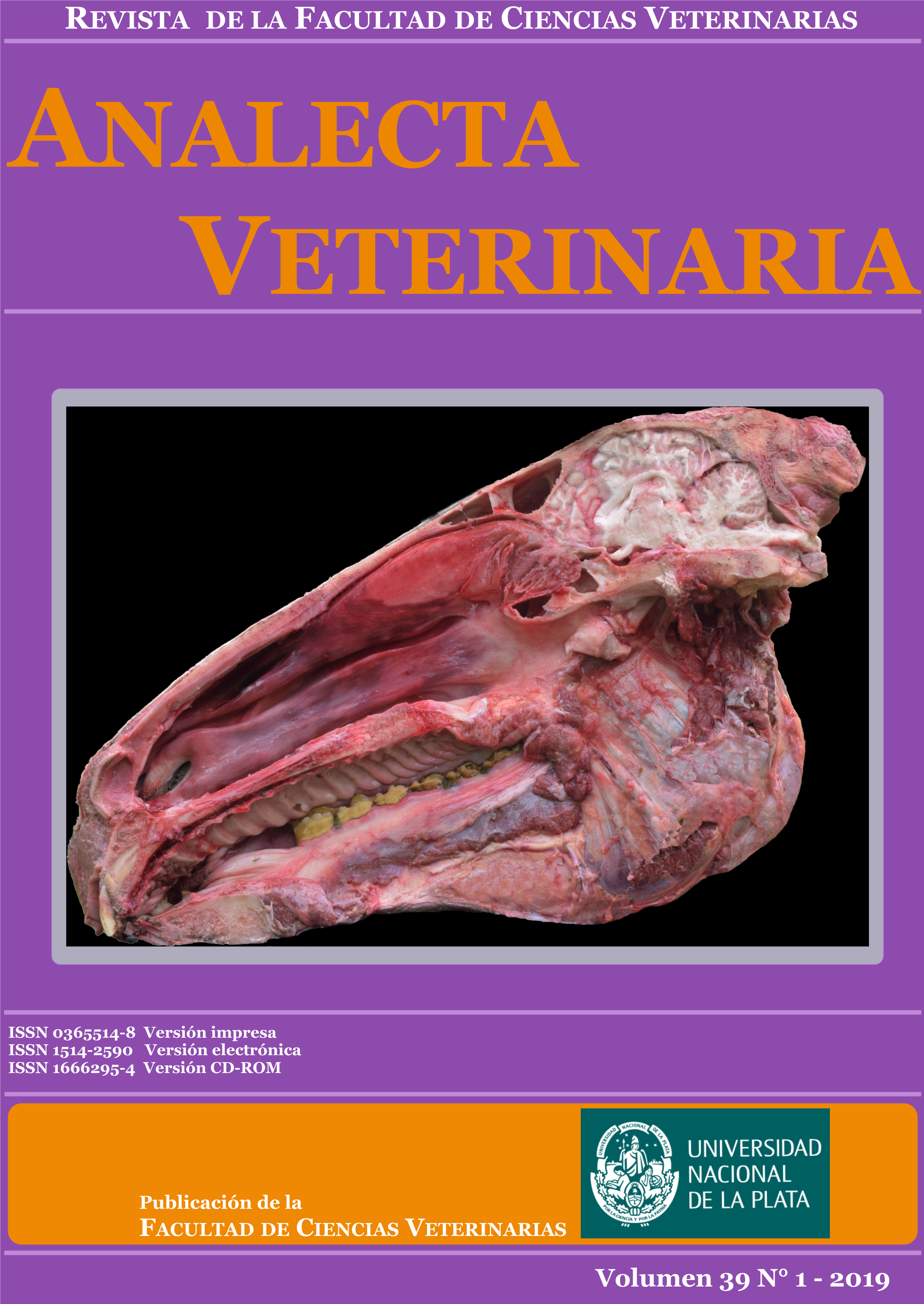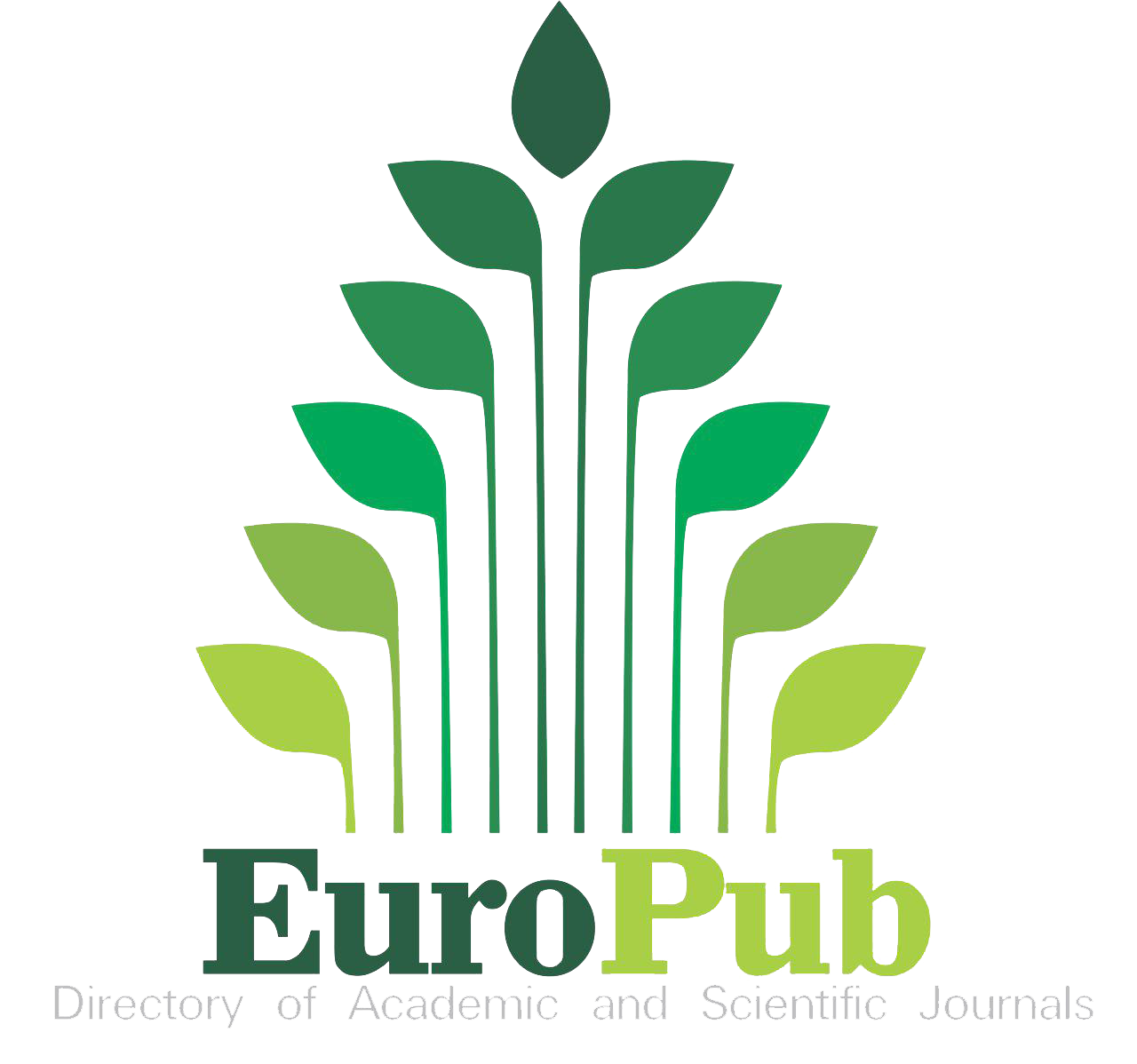Case report of equine protozoal myeloencephalitis (EPM) in Argentina
DOI:
https://doi.org/10.24215/15142590e035Keywords:
Sarcocystis neurona, EPM, Diagnosis, ArgentinaAbstract
Equine protozoal myeloencephalitis (EPM) is mainly caused by Sarcocystis neurona and generates significant
economic losses. In Argentina, antibodies to this protozoan have been detected but no clinical cases have been reported. A 12year old mare, from Buenos Aires Province, presented asynchronous walking and bilateral stringhalt. The animal was treated with phenytoin, vitamin B1, nonsteroid antiinflammatory drugs and subsequent tenectomy. Clinical outcome progressed to depression, facial paralysis, atrophy of the muscles of the back, loin and pelvic limbs, dysmetria and gait instability, generalized tremors and tetraparesis. Euthanasia was decided based on clinical progression and lack of response to treatment. Microscopic lesions were observed in thalamus, metencephalon and spinal cord, and consisted in small hemorrhagic multiple foci and small foci of chronic inflammation. Immunohistochemical analysis revealed the presence of intracellular S. neurona meronts and free merozoites in brain and spinal cord samples. The PCR-RFLP analysis showed a specific S. neurona restriction pattern in brain samples. Previous detection of antibodies to S. neurona in horses, the abundance of opossums in the region and the specific confirmation in this case, suggest that the disease may be widespread in Argentina. This is the first EPM case
report in Argentina, confirmed by histopathologic, immunohistochemical and molecular studies.
Downloads
Metrics
References
Boy MG, Galligan DT, Divers TJ. 1990. Protozoal encephalomyelitis in horses: 82 cases (1972-1986). Journal of the American Veterinary Medical Association. 196:632-4.
Dubey JP, Lindsay DS, Saville WJ, Reed SM, Granstrom DE, Speer CA. 2001. A review of Sarcocystis neurona and equine protozoal myeloencephalitis (EPM). Veterinary Parasitology. 95:89-131. doi.org/10.1016/S0304-4017(00)00384-8
Dubey JP, Speer CA, Bowman DD, Horton KM, Venturini MC, Venturini L. 2000. Experimental transmission of Sarcocystis speeri Dubey and Lindsay, 1999 from the South American opossum (Didelphis albiventris) to the North American opossum (Didelphis virginiana). Journal of Parasitology. 86:624-7. doi.org/10.1645/0022-3395(2000)086[0624:ETOSSD]2.0.CO;2
Dubey JP, Venturini L, Venturini C, Basso W, Unzaga J. 1999. Isolation of Sarcocystis falcatula from the South American opossum (Didelphis albiventris) from Argentina. Veterinary Parasitology. 86:239-44. doi.org/10.1016/S0304-4017(99)00145-4
Dubey JP, Venturini MC, Venturini L, McKinney J, Pecoraro M. 1999. Prevalence of antibodies to Sarcocystis neurona, Toxoplasma gondii and Neospora caninum in horses from Argentina. Veterinary Parasitology. 86:59-62. doi.org/10.1016/S0304-4017(99)00127-2
Fenger CK, Granstrom DE, Langemeier JL, Stamper S, Donahue JM, Patterson JS, Gajadhar AA, Marteniuk JV, Xiaomin Z, Dubey JP. 1995. Identification of opossums (Didelphis virginiana) as the putative definitive host of Sarcocystis neurona. The Journal of Parasitology. 81:916-9. doi.org/10.2307/3284040
Hamir AN, Moser G, Galligan DT, Davis SW, Granstrom DE, Dubey JP. 1993. Immunohistochemical study to demonstrate Sarcocystis neurona in equine protozoal myeloencephalitis. Journal of Veterinary Diagnostic Investigation. 5:418-22. doi.org/10.1177/104063879300500320
Hamir AN, Tornquist SJ, Gerros TC, Topper MJ, Dubey JP. 1998. Neospora caninum-associated equine protozoal myeloencephalitis. Veterinary Parasitology. 79:269-74. doi.org/10.1016/S0304-4017(98)00178-2
Howe DK, Gaji RY, Marsh AE, Patil BA, Saville WJ, Lindsay DS, Dubey JP, Granstrom DE. 2008. Strains of Sarcocystis neurona exhibit differences in their surface antigens, including the absence of the major surface antigen SnSAG1. International Journal for Parasitology. 38:623-31. doi.org/10.1016/j.ijpara.2007.09.007
Mackay R. 2006. Equine protozoal Myeloencephalitis: Treatment, Prognosis, and Prevention. Clinical Techniques in Equine Practice. 5:9-16. doi.org/10.1053/j.ctep.2006.01.003
Moré G, Vissani A, Pardini L, Monina M, Muriel M, Howe D, Barrandeguy M, Venturini MC. 2014. Seroprevalence of Sarcocystis neurona and its association with neurological disorders in Argentinean horses. Journal of Equine Veterinary Science. 34:1051-4. doi.org/10.1016/j.jevs.2014.06.002
Rojas MC, Moré G, Campero LM, Fort M, Giménez H, Venturini MC. 2016. Detection of Neospora spp. antibodies in horses from La Pampa, Argentina. 10th International Equine Infectious Diseases Conference (IEIDC X). Buenos Aires, Argentina. Journal of Equine Veterinary Science 39: S50. doi.org/10.1016/j.jevs.2016.02.110
Tanhauser SM, Yowell CA, Cutler TJ, Greiner EC, Mackay RJ, Dame JB. 1999. Multiple DNA markers differentiate Sarcocystis neurona and Sarcocystis falcatula. The Journal of Parasitology. 85:221-8. doi.org/10.2307/3285623
Torre F. 2005. Clinical diagnosis and results of surgical treatment of 13 cases of acquired bilateral stringhalt (1991–2003). Equine Veterinary Journal. 37:181-3. doi.org/10.2746/0425164054223877
Yeargan MR, Howe DK. 2011. Improved detection of equine antibodies against Sarcocystis neurona using polyvalent ELISAs based on the parasite SnSAG surface antigens. Veterinary Parasitology. 176:16-22. doi.org/10.1016/j.vetpar.2010.10.034
Downloads
Published
How to Cite
Issue
Section
License
Authors retain the copyright and assign to the journal the right of the first publication, with the with the terms of the Creative Commons attribution license. This type of license allows other people to download the work and share it, as long as credit is granted for the authorship, but does not allow them to be changed in any way or used them commercially.

Analecta Veterinaria by School of Veterinary Sciences, National University of La Plata is distributed under a Creative Commons Attribution-NonCommercial-NoDeriv 4.0 International License.

























